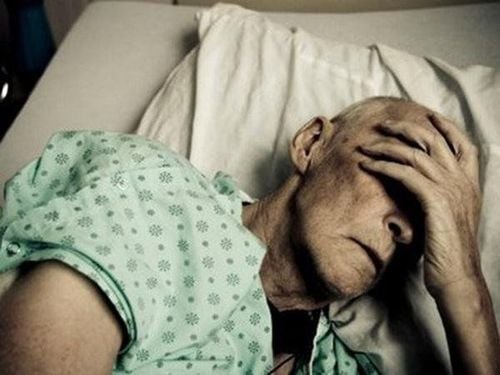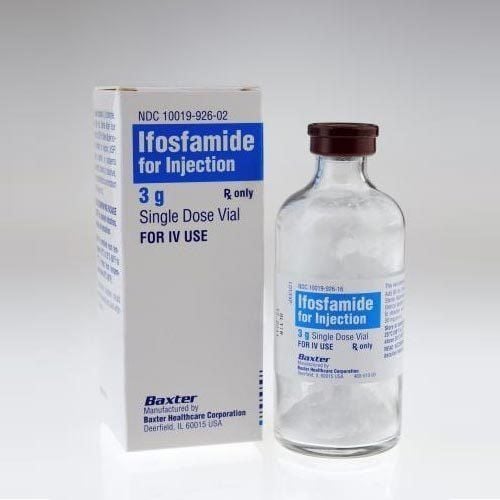This is an automatically translated article.
Survival rates after cancer treatment help people with cancer know how to stay alive for a specific period of time. However, this rate will not be able to specify whether people who survive cancer are still in the treatment stage or whether they have completely recovered from the disease.Similar to how long cancer lives, when first diagnosed with cancer, many patients wonder about their prognosis. Doctors aren't able to tell patients about the future course of the disease, but they can make some inferences based on data from other patients.
1. What is the survival rate for cancer patients?
Survival rates for cancer patients can tell them the odds of survival for a particular time period. This chart will usually show the patient the overall numbers measured every 5 years.These ratios are usually expressed in a tabular format as a percentage. For example, the 5-year survival rate after bladder cancer treatment is 77%. This suggests that, for every 100 people with the disease, 77 will survive the five-year period of diagnosis. That means 23 people died from this cancer within 5 years of being diagnosed with the disease.
Survival rates for cancer patients are based on the study of data collected from hundreds or thousands of patients who have a particular type of cancer. An overall survival rate will be analyzed from data from patients of all ages and health conditions along with whether they were diagnosed with the disease early.
Doctors can tell them about survival statistics based on the stage of cancer a patient is experiencing. For example, 56% of patients diagnosed with lung cancer in the early stages are likely to live longer to at least 5 years after the time of diagnosis. A 5-year data sheet of patients with lung cancer shows that 5% of them have cancer that has spread to other parts of the body.
The general cancer prognosis table will not be able to specify whether people who are still alive after cancer are still in the treatment stage or whether they have completely recovered from the disease. Here are some more specific types of survival rate tables:
Cancer cure rate tables: Shows data on people who didn't notice signs of cancer. Table of percentages of people in the cancer stage with no worsening: Indicates the number of people who have been treated for cancer and do not show any signs of cancer recurrence or indicate about people who are still in the stable phase. These percentages will usually show data over a 5-year period, and this doesn't mean the cancer won't come back after this time. Some types of cancer recur after many years of treatment. In some cancers, if they don't come back after 5 years of their initial diagnosis, getting them back is very unlikely. Talk to your doctor about the possibility of a recurrence of the type of cancer you have.
Trắc nghiệm: Thử hiểu biết của bạn về bệnh ung thư
Ung thư là nguyên nhân gây tử vong hàng thứ 2 trên thế giới. Thử sức cùng bài trắc nghiệm sau đây sẽ giúp bạn có thêm kiến thức về yếu tố nguy cơ cũng như cách phòng ngừa bệnh ung thư.
Bài dịch từ: webmd.com
2. How will survival rates after cancer treatment help?
You and your doctor can use cancer survival statistics to:Understand your own prognosis: With data from the experiences of many others in the same situation as you, it can help Doctors give cancer prognosis as well as the possibility of definitive cure. Other factors include age and general health. Your doctor will use these factors to help you better understand the severity of your condition.

Specialists can help you better understand the benefits and risks of each treatment.
3. What can't the survival rate tables tell you?
Survival statistics will probably leave you unsatisfied. Each representation of the number of patients with a type of cancer can be based on thousands of patients. While they may be able to provide you with general information, these percentages will not be able to show you personalized information about a definitive cure for this disease. It is for this reason that some people ignore cancer survival charts.Survival statistics will often not factor in the patient's medical condition. If you are in good health, it is possible to overcome cancer with a higher rate than the statistics predict.
If you are having any serious medical problems the survival rate will be reduced. Your doctor can help tailor the statistics in a more appropriate way to your particular condition.
Survival statistics tables have some other limitations. For example, they cannot:
Get data from the latest therapies: The current statistics you use are all taken from patients' diagnoses more than 5 years ago. The effects of the latest cancer treatments won't be on the charts for at least the next five years. Tells you which cancer therapy to choose: This will depend on you and your doctor. Some people will choose the most effective cancer therapies to cure the disease. But many other patients evaluate factors such as side effects, cost and treatment schedule to make an appropriate decision.

4. You can also choose to ignore the survival statistics tables
These percentages won't tell you exactly where you are, so it's up to you whether or not to pay attention to these stats. You may feel that the statistics from the scale table will not be relevant or useful to you. But there are still many people who want to know more about the type of cancer they have. Therefore, knowing some relevant information will help you have a clearer view of your prognosis.Knowing the type of cancer you have can help reduce anxiety when analyzing treatment options, but also survival statistics after treatment Cancer can cause confusion and anxiety. Tell your doctor if you decide you don't care about these rate numbers. Some people prefer to have a big picture rather than detailed statistics. Let your doctor know which way you prefer to receive information and ask any questions and concerns about these cancer-related statistics.
Please dial HOTLINE for more information or register for an appointment HERE. Download MyVinmec app to make appointments faster and to manage your bookings easily.
References: mayoclinic.org, cancer.net, mayoclinichealthsystem.org, cancer.ca












